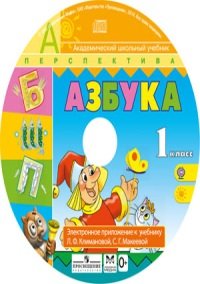J. Barcelo – Mathematics and Archaeology (2015)
976 ₽
Автор: J. Barcelo
Название книги: Mathematics and Archaeology (2015)
Формат: PDF
Жанр: Археология
Страницы: 523
Качество: Изначально компьютерное, E-book
Although many archaeologists have a good understanding of the basics in computer science, statistics, geostatistics, modeling, and data mining, more literature is needed about the advanced analysis in these areas. This book aids archaeologists in learning more advanced tools and methods while also helping mathematicians, statisticians, and computer scientists with no previous knowledge of the field realize the potential of the methods in archaeological experiments.
In May 2013 I received an email from a representative of Science Publishers, addressed
to Juan Antonio Barceló. The email was an invitation to edit a book on some aspect
of Mathematics. Well, I have been working for the last 25 years on “mathematical”
subjects, but this work has always been applied to a discipline that is apparently very
far away of Mathematics. I am an Archaeologist, considered by many as a “crazy”
archaeologist working on esoteric methods like statistics, simulation, machine learning
and data mining. That the publisher of a series of books on Mathematics would invite
me to edit a book on a subject so specifi c was something that I did not understand at
fi rst. The answer actually is pretty simple. I am not the only Juan Antonio Barceló in
the world. There is a famous mathematician in Madrid, and the email was addressed
to him, but it arrived to me. I quickly responded to the publisher indicating that they
should contact the right “Barceló” at the “Universidad Autónoma de Madrid”—and not
me at the “Universitat Autònoma de Barcelona”, my University. At the same time I took
the initiative of suggesting that I could contribute with a different book, a volume on
Mathematics and Archaeology. They asked me for a proposal, and I sent an invitation
to many archaeologists, mathematicians and computer scientists that I knew had been
developing new methods for archaeological research. I received many positive answers,
and with this material Igor and I organized a series of subjects that could be of interest.
The proposal was accepted by the Publisher, contributing authors sent their chapters,
and the result is the book you have before your eyes.
One year after receiving that fi rst misaddressed invitation, the fi nal draft was sent
to the publisher. Igor and I have interacted a lot with the contributing authors, insisting
that all of us should read most of the chapters, so the Project becomes more cohesive.
Therefore, I acknowledge fi rst of all authors and co-authors, the people that interacted
with us, and the people who contributed writing the chapters or with the research
presented in them. This is their book, and should be read as a collective effort.
Since the inception of the Project I wished that two outstanding scholars addressed
some general conclusions from the perspective of a Mathematician and from the point
of view of an Archaeologist. Michael Greenacre accepted at the very beginning, and
Keith Kintigh joined the project at a later moment. Many thanks also to Jim Doran,
one of the pioneers in quantitative archaeology, who has contributed with the foreword
to the book.
Some colleagues have worked as anonymous reviewers, and their comments have
contributed to the present version. I also acknowledge the comments by Mike Baxter,
Ben Ducke, Michael Greenacre, Irmelda Herzog, Keith Kintigh and Dwight Read. We acknowledge the help from Vijay Primlani, Director of Science Publishers,
who made the initial contact and was kind enough to accept the many delays the Project
has experimented.
This has been a long Project, and my contribution has been intertwined with research
work at the Quantitative Archaeology Lab (Universitat Autònoma de Barcelona). Thanks
to all members: Florencia, Vera, Joan, Giacomo, Katia, Berta, Hendaya, Oriol, Laura.
My introductory chapter is based on ideas and materials from our collective research,
funded by the Spanish Ministry for Economy and Competitiveness (HAR2012-31036
and CSD2010-00034, this last one under the CONSOLIDER-INGENIO Framework).





Отзывы
Отзывов пока нет.